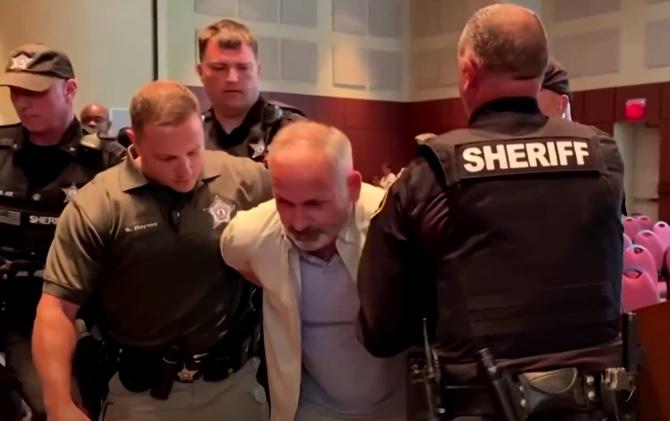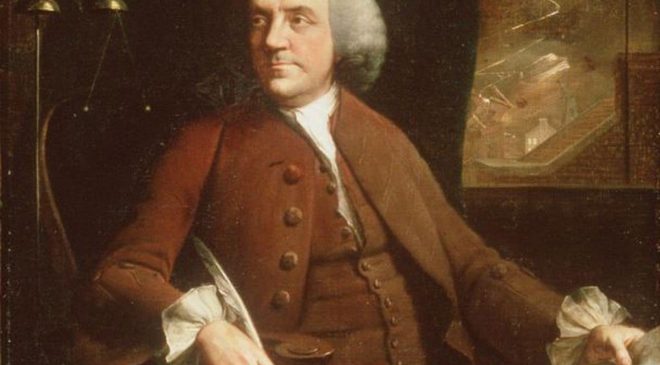Whether it’s yesterday’s battles over prayer in school or today’s conflicts over critical race theory, public schooling causes people to fight. It’s a struggle between values and viewpoints that ends with one group imposing its will upon others. The curriculum that is adopted or the one that is shunned inevitably creates winners and losers.
Neal McCluskey at the Cato Institute maintains the Public Schooling Battle Map that documents incidents of conflict in public school districts across the country. He explains that “rather than build bridges, public schooling often forces people into wrenching, zero‐sum conflict.” As a diverse nation, with an array of individual preferences and perspectives, a one-size-fits-all, government-run school system is sure to foster strife.
One of the latest and clearest examples of this discord occurred this week in Loudoun County, Virginia where two people were arrested at a school board meeting. Tensions escalated over the contentious topic of teaching critical race theory, as well as transgender policies, in the public schools. Over 200 parents were prepared to speak against the school board’s plans until the meeting was cut short due to tumult. Even as some parents vowed to fight the school board, the school board vowed to fight back. “We will not back down from fighting for the rights of our students and continuing our focus on equity,” said board chair Brenda Sheridan upon terminating the meeting.
Critical race theory, in particular, has sparked numerous public school conflicts over the past several months. Advocates of incorporating critical race theory into classrooms as a way to highlight racial injustice are pitted against opponents who view it as a harmful and racially-divisive ideology. Opponents cheer when critical race theory is banned in public school classrooms, while proponents boo–and vice versa.
A free market in education would dissolve these conflicts, as families and educators choose from an assortment of options through the peaceful process of voluntary exchange. If we had mandatory, government-assigned grocery stores based on our zip codes, you can bet there would be battles over what food is stocked and who decides. Instead, we can pick our grocery stores based on our individual needs and preferences, and select from an abundance of food items.
Similarly, a free market in education would generate a panoply of learning options for families. Without government coercion and interference, families would be able to decide for themselves what educational environment is best for their children. If they choose a particular school or setting and are dissatisfied, they can leave and select something different. This freedom to choose creates necessary competition among education providers, just as it does in other market areas. If I don’t like my local grocery store, I can take my business elsewhere. If enough people don’t like that grocery store, it shuts down. This market dynamism also triggers entrepreneurship and invention, as creative individuals introduce new products and services. In a free education market, the learning possibilities are endless.
In his 1964 essay, FEE’s founder Leonard Read wrote about what would happen in a truly free education market:
“Creative thought on education would manifest itself in millions of individuals. Such genius as we potentially and compositely possess would assert itself and take the place of deadening restraints. Any person who understands the free market knows, without any qualification whatsoever, that there would be more education and better education. And a person with a faith in free men is confident that the costs per unit of learning accomplished would be far less. For one thing, there wouldn’t be any police boss to pay for. Nor would there be the financial irresponsibility that characterizes those who spend other people’s money. The free market is truly free: it is free of restraints against creative action; it presupposes free exchange; its services are as free as the sun’s energy.”
In addition to sparking innovation and improving quality and choice, a truly free education market will eliminate conflict. Just as we don’t fight over boxes of Wheaties in the grocery story, we won’t fight over what is or is not taught in our children’s schools when we are each free to choose where, how, what, and with whom they learn. Government coercion, or what Read refers to as “organized police force,” creates conflict, while free-market voluntarism produces peace. Read writes: “Education is a peaceful, creative, productive pursuit. When police force is wielded in the educational market—just as in the commodity market — imbalance is the consequence.”
He later adds: “To apply police force to you is to contradict your judgments. If applied to others, it can only contradict their judgments. Who is the appropriate ruler of your educational program? You? Or others? Or a political committee which cannot be better than the lowest common denominator of others? The free market way relies not on one judgment for the millions but on millions of individual judgments.”
If we relied on these millions of individual judgments, rather than operating within one coercive government system of education, cooperation would prevail and creativity would be unleashed. Arrests at school board meetings would disappear, as would Cato’s battle map. Parents would peacefully choose among a variety of education services that educators and innovators would peacefully provide.
Conflict in education is not inevitable. Indeed, it exists only because we let it.



